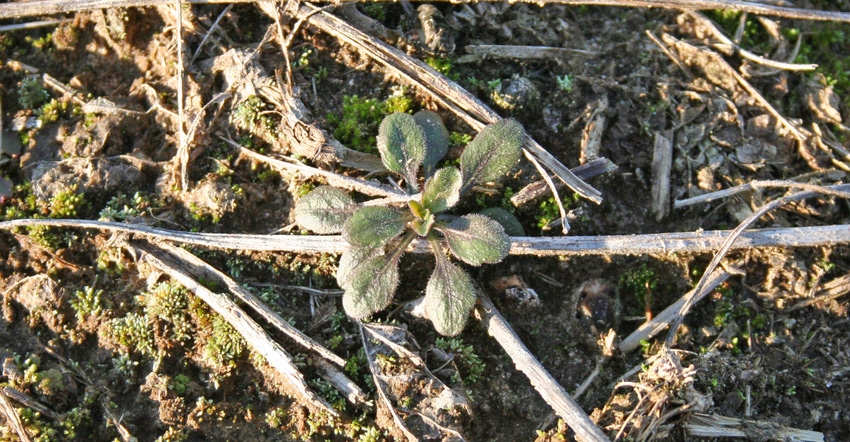September 28, 2022

Weeds got a good start with a late spring. Should we apply fall herbicides on corn ground going to beans in ’23? If so, what? How late?
The Indiana certified crop adviser panelists answering this question include Steve Gauck, regional agronomy manager for Beck’s, Greensburg; Andy Like, agronomist with AgriSelect Evansville LLC, Vincennes; Dan Quinn, Purdue Extension corn specialist, West Lafayette; and Dan Ritter, central region agronomist with Dairyland Seed, Rensselaer.
Gauck: Managing weeds in the fall can provide better control next spring. Keeping the weed population to a minimum helps with insect pressure and allows soils to warm quickly in the spring. If you plan to spray, look at your weed pressure. If you are just targeting broadleaves, something as simple as 2,4-D plus dicamba can be effective. Grasses need a glyphosate product. These chemicals do not have a residual. There are residual options if you’re targeting a cleaner seedbed for spring.
Like: I generally don’t recommend fall herbicides going to soybeans. Burning down fall-emerging weeds in the early spring has not been much of a problem with dicamba- or 2,4-D-traited soybeans. I believe dollars used on fall herbicides are better spent in the spring on robust rates of preemergence and postemergence-applied residual products.
If you make a fall application, make it as late as possible so residuals will last longer. To burn down emerged weeds, I recommend glyphosate plus dicamba or 2,4-D. For a fall residual, I like products that perform well with a lot of precipitation. Examples include Authority XL, Valor XLT and Envive.
Quinn: It will be important to scout fields following harvest to gauge overall weed pressure to see if they need sprayed. Also, note the most prevalent weed species. Fall is the best time to control certain troublesome winter annual weeds like marestail. It is typically one of the biggest weed problems for soybeans in Indiana. A combination of 2,4-D and dicamba can help control this weed in a fall herbicide program. Other weeds that are better controlled in the fall like dandelion can be handled with 2,4-D and glyphosate. However, it is important to understand what weeds are present in your fields to make the correct herbicide selection for proper control.
Another important consideration for fall herbicide applications is air temperature. The best time to apply is when the morning low temperature is above freezing. Ideally, good foliar herbicide activity occurs when daytime temperatures reach above 50 degrees F. Herbicides like glyphosate and 2,4-D tend to work much slower in cooler conditions. For more information, consult the 2022 Weed Control Guide for Ohio, Indiana and Illinois.
Ritter: Several folks have had great success with fall-applied herbicides, especially where soybeans will be planted into no-till cornstalks. The application of growth regulators such as 2,4-D, dicamba or a combination of the two has helped control marestail and common winter annuals such as shepherd’s purse, pennycress and others. These weeds germinate in the fall and survive the winter. They can be heartier and more difficult to control in the spring, especially when spring herbicide applications are delayed.
The use of residual herbicides in the fall can help in tough weed situations as well. When choosing a fall residual product, remember to take into consideration crop rotation interval. There are several residual products that allow for both corn and soybeans to be planted the following spring. Product type and rates vary based on availability and soil type.
You May Also Like




